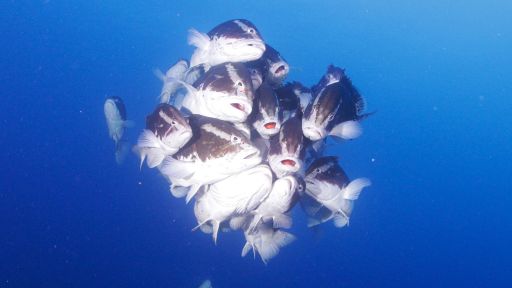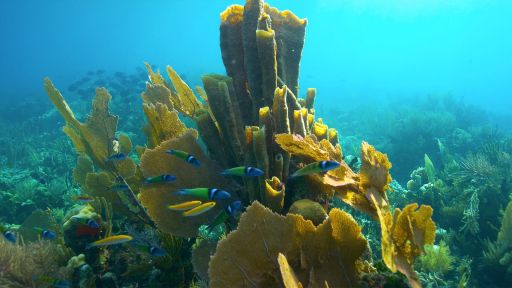In October 2019, tragedy strikes the Cayman Crown. The beautiful coral of the reef was bleached, but four months later, the reef begins to make a miraculous recovery. Here’s why.
Features
- [Narrator] But in October 2019, tragedy strikes the region.
The crown takes a direct hit.
- [Speaker] It was completely bleached, like all of it.
It was just all white.
- We saw a massive bleaching event.
I mean, the corals that we came to know and love blanketed with snow, it looked like.
- [Narrator] Then four months later, the team notices something extraordinary.
- [Speaker] When we go back in January, the corals get better.
February they get even better.
May, the corals are looking fine.
They're looking beautiful.
- [Speaker] We have this beautiful Cayman crown reef that it has recovered.
The corals in this region are resilient.
- [Narrator] The news reaches coral expert Myles Phillips.
He joins the team to investigate the crown's.
remarkable recovery.
Will Haman shares his theory.
- [Will] Let me give you the geographic context.
So this is this Gulf of Honduras.
- [Myles] Yeah.
- [Will] And this channel, that's your Cayman Crown.
What you gotta remember is that this is the Cayman Trench.
Here, it's already 1000, 1500 meters and then drops, drops, drops, drops, drops 7,600 meters, deepest point.
- At its deepest, the trench is over four miles down.
A 15 pound bowling ball dropped in would take over an hour and a half to hit bottom.
Cold currents rising from those depths sweep nutrients up to the crown.
- [Will] This water comes slamming up onto this vertical shelf.
So where we were, those jewel reefs- - [Myles] Right at the top of it.
- [Will] Okay.
- That's the source of your upwelling.
- [Will] Exactly.
- [Narrator] The upwelling flows along folds of rock and coral that act like pipes and channels in a cooling system, easing temperatures and providing nutrients.
- [Will] The other factor that we haven't talked about we get four meters, like 12 feet of rain that falls all within- - [Myles] All in this region.
- Through agricultural lands.
- Into this one bay through this same little channel.
- [Will] Exactly.
- So this is forming like a roof, like a shade.
- That's it. - Over this coral reef.
- That's it.
- [Narrator] Just as the Caribbean water temperature peaks, muddy water washes over the reef.
Emerging research suggests that this runoff could shield corals from damaging sunlight.
- They're getting shade, they're getting fed and they're getting cooled.
So where all the rest of the Caribbean took that bleaching and wrestled coming back, this area is resilient because of those factors.


